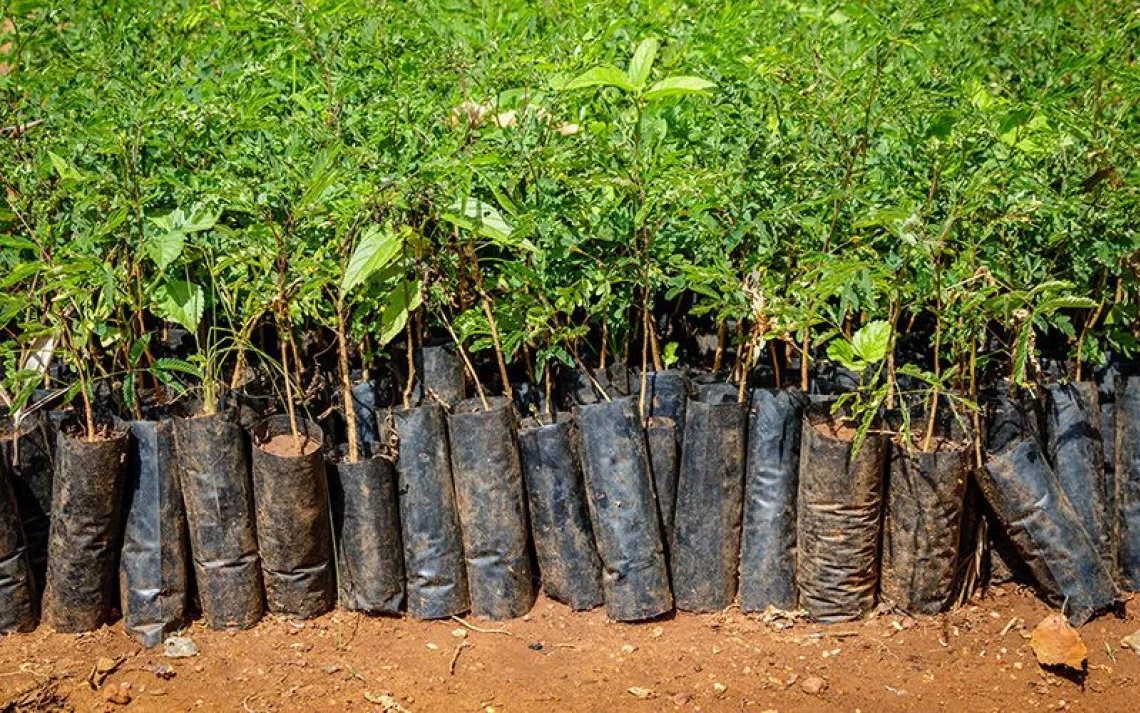Cool Schools 2011: The Top Ten Coolest Schools
September 15, 2012

10: Middlebury College
Middlebury, Vermont
Middlebury uses biomass to keep warm during Vermont winters. As part of its plan to be carbon neutral by 2016, the prestigious liberal-arts school, which used to burn 2 million gallons of fuel oil annually, installed a woodchip-powered cogeneration system that halved its oil consumption. Above, four of the hundreds of Middlebury students who traveled to Washington, D.C., for Power Shift 2011 to advocate for a clean-energy future.
Photo courtesy of Clare Crosby
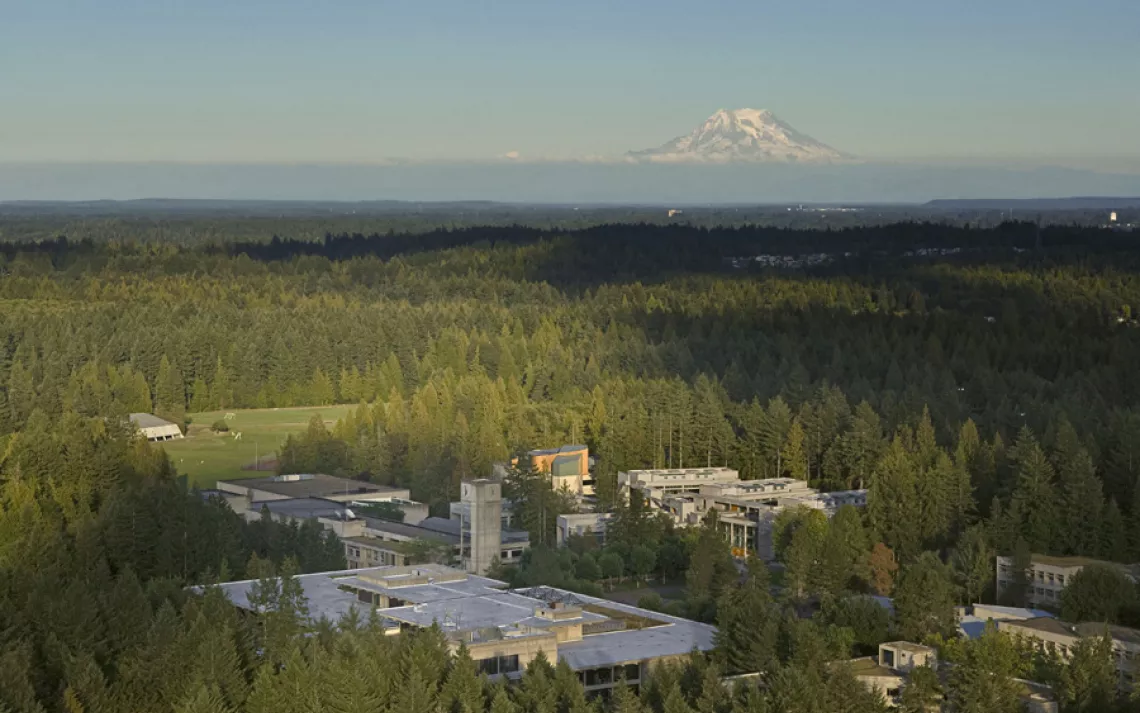
9: Evergreen State College
Olympia, Washington
Evergreen State, in Olympia, Washington, aims to reach carbon neutrality by 2020. Though its campus is currently one-third coal powered, students pay a self-imposed fee of $1 each academic quarter to buy renewable-energy credits to offset the college's electricity consumption. Roughly 70 percent (700 acres) of the campus, above, has been dedicated as undeveloped forestland.
Photo courtesy of Evergreen State College
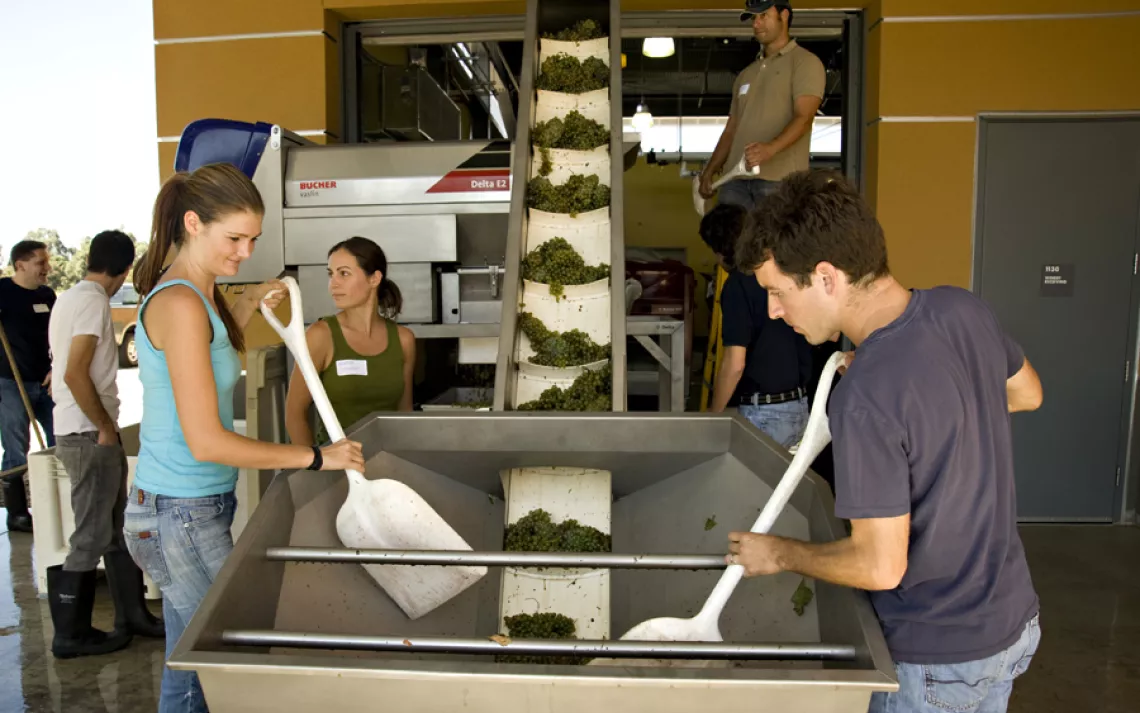
8: University of California, Davis
Davis, California
Established as a farm school, UC Davis still excels in nurturing sustainable methods of food production. Above, viticulture and enology students prepare grapes at the campus's new Brewery, Winery, and Food Science Laboratory, a facility that earned LEED Platinum certification.
Photo courtesy of Karin Higgins/UC Davis
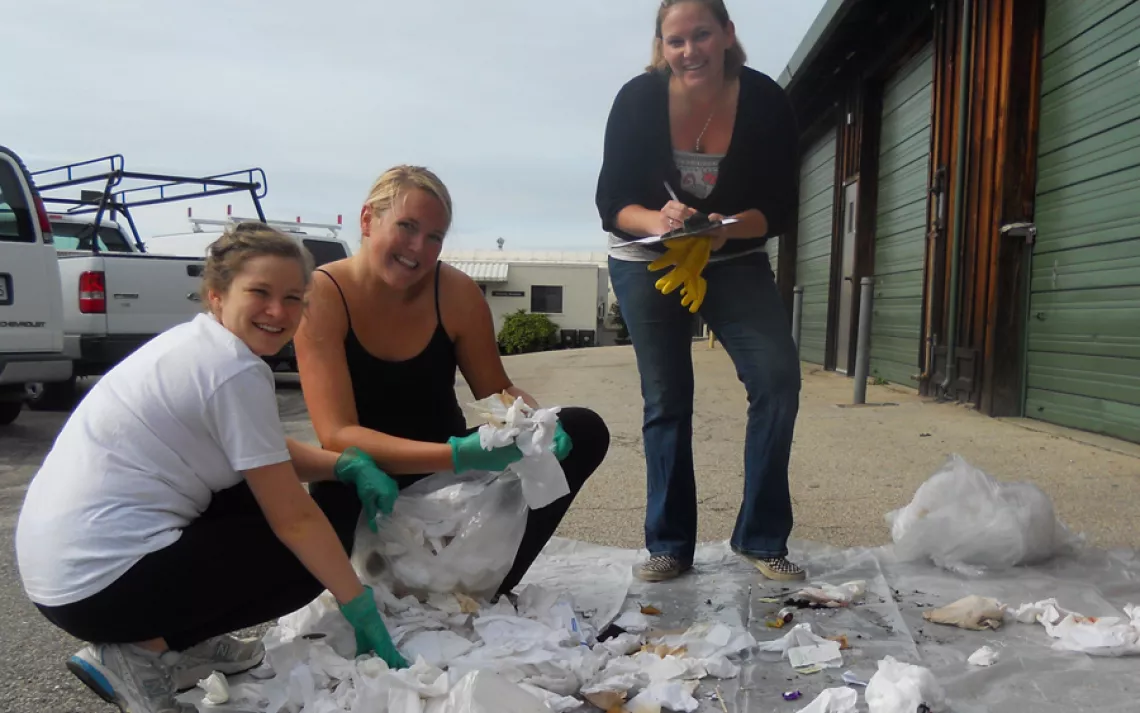
7: University of California, Santa Cruz
Santa Cruz, California
The Banana Slugs' fight against trash includes eschewing dining trays and bottled water. That's one reason its waste-diversion rate soars at 84 percent. Above, from left, students Sarah Cohen, Ellen Bartow, and Amelia Gulling conduct a waste assessment.
Photo courtesy of UC Santa Cruz
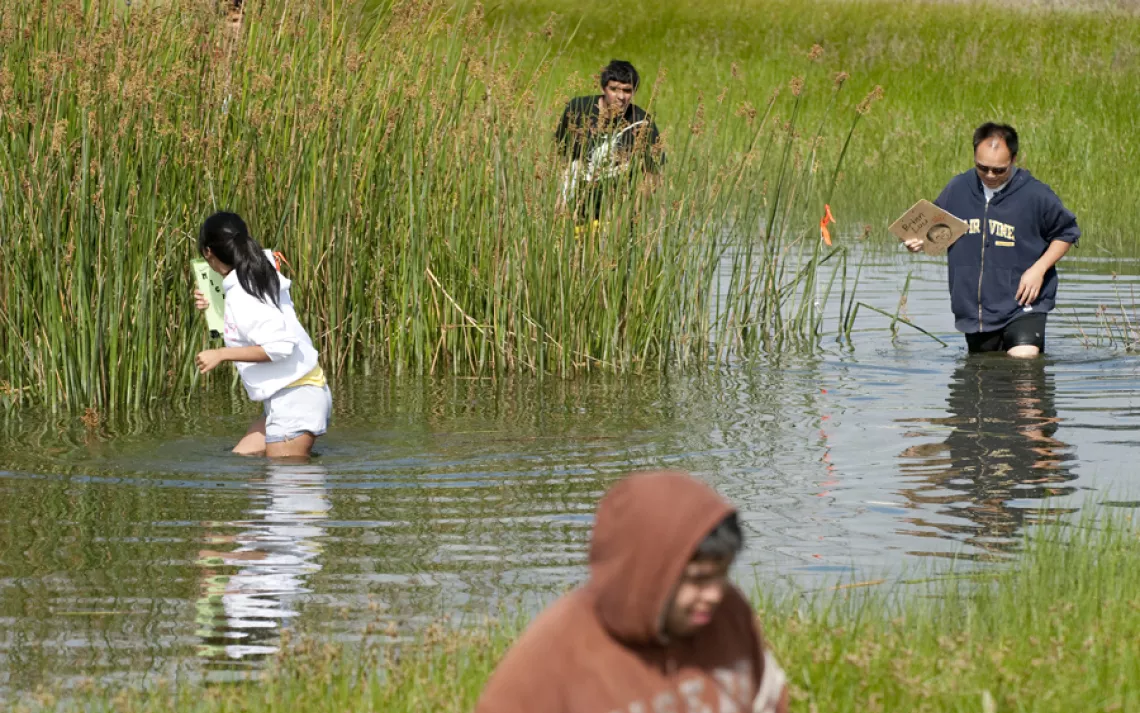
6: University of California, Irvine
Irvine, California
One of America's most energy-efficient campuses has a cogeneration facility that produces heat and electricity that meets most of the university's power needs. UC Irvine also pioneered a strategy to cut its labs' emissions in half. Above, students in the Field Freshwater Ecology course wade through the San Joaquin Marsh Reserve to find and identify aquatic insects.
Photo courtesy of Daniel A. Anderson/UC Irvine
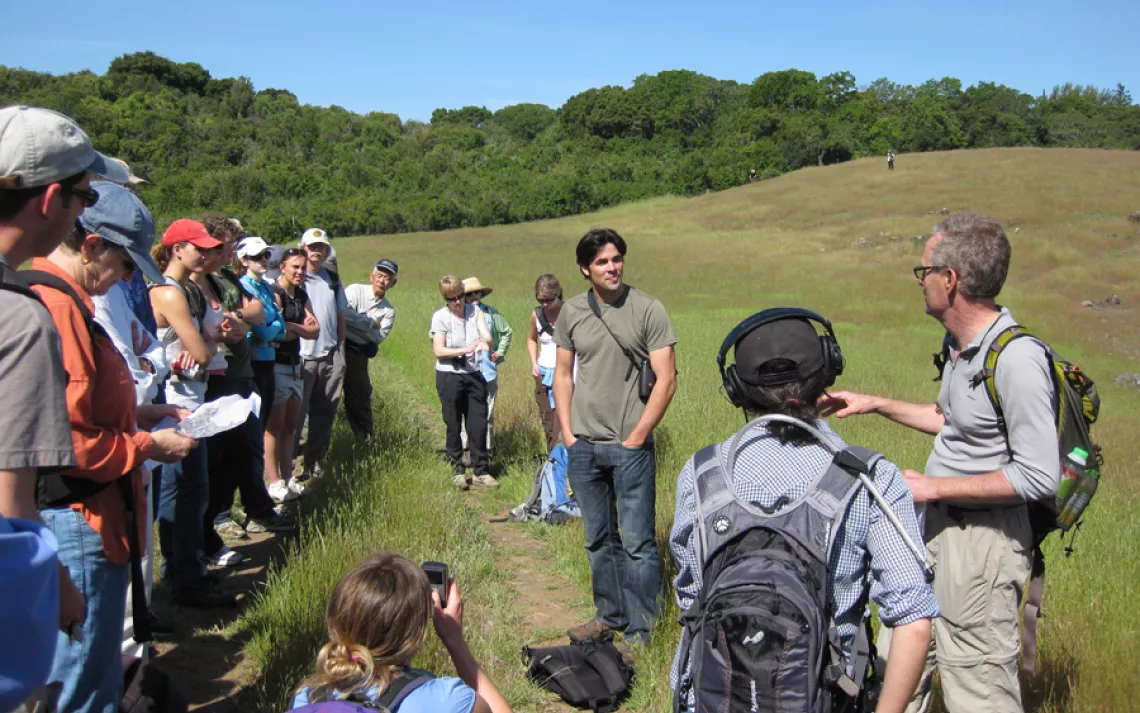
5: Stanford University
Stanford, California
Almost two-thirds of Stanford's 8,180-acre campus is undeveloped open space, including the 1,200-acre Jasper Ridge Biological Preserve, above, where students and faculty learn how climate change affects local biodiversity. Stanford also provides miles of cycling lanes, 12,000 bike racks, and free rides on biofueled shuttles.
Photo courtesy of Stanford University/Jiffy Bennett Vermylen
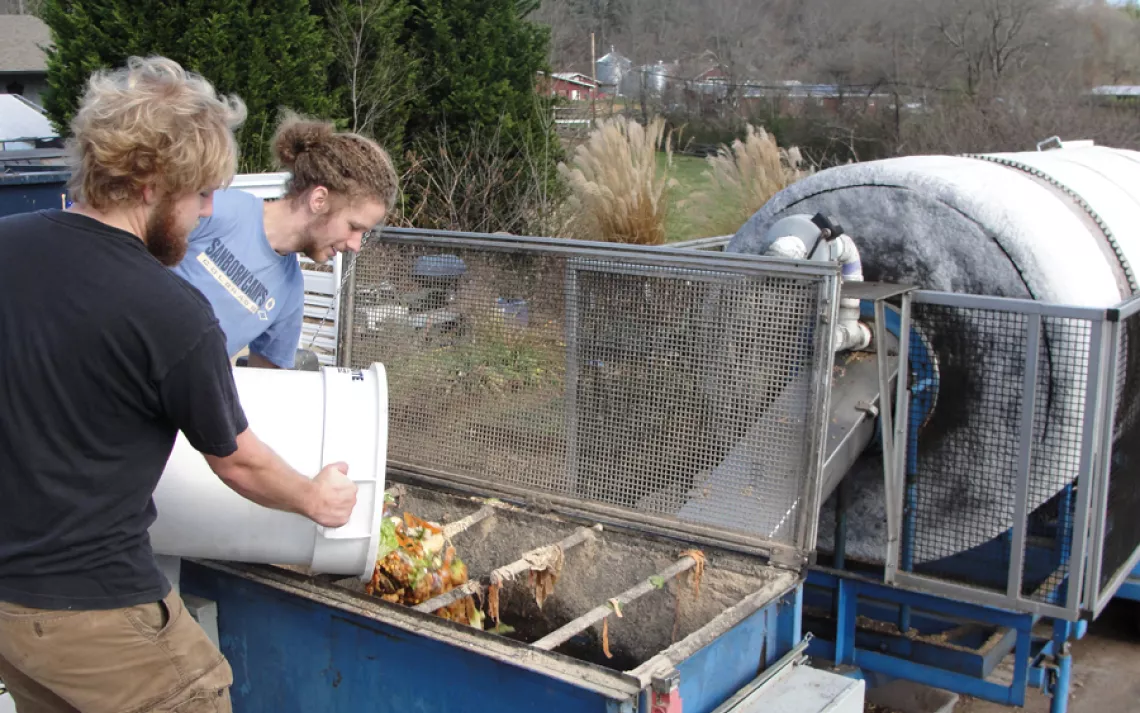
4: Warren Wilson College
Swannanoa, North Carolina
As part of Warren Wilson's put-on-your-boots-and-grab-a-shovel philosophy, students grow trees, alfalfa, and corn and raise cows, pigs, and chickens on the school's 250-acre farm in Asheville, North Carolina. Above, students load a composter with kitchen waste. The resulting humus will be used in the College Garden to grow more produce for the cafeteria.
Photo courtesy of Stan Cross
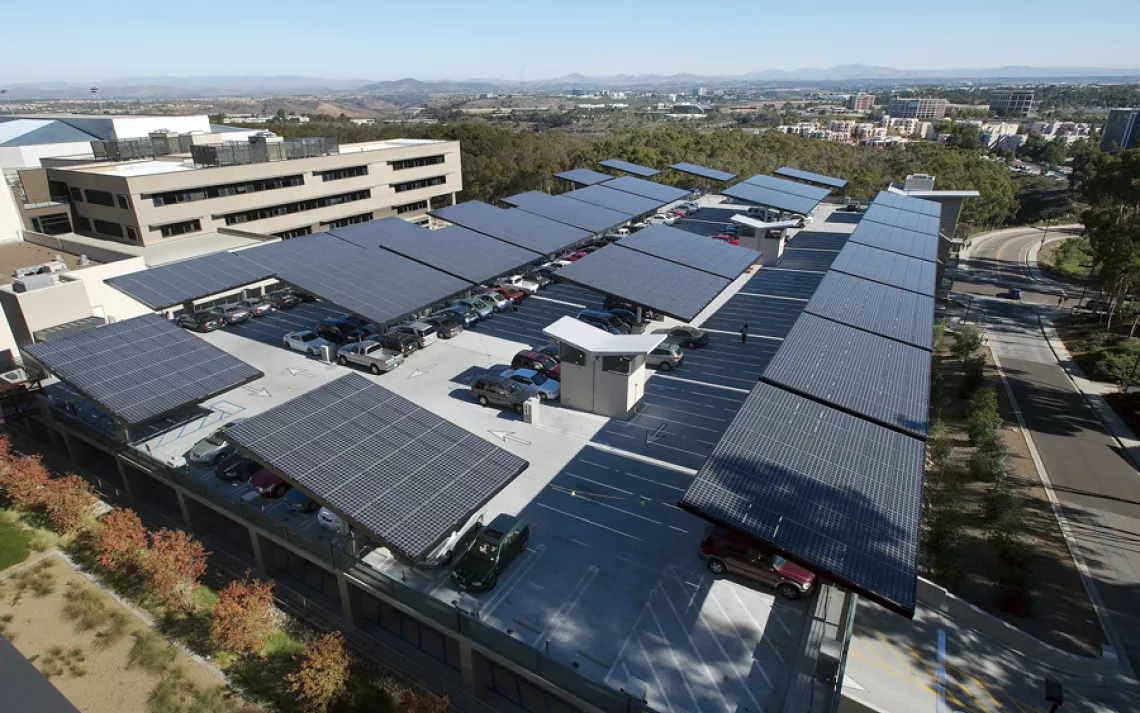
3: University of California, San Diego
San Diego, California
UCSD's cogeneration plant provides up to 85 percent of the school's electricity and heats more than 6 million square feet of building interiors. It earned the Tritons the EPA's 2010 Energy Star award. Above, solar panels shade the campus's Hopkins parking structure.
Photo courtesy of UC San Diego
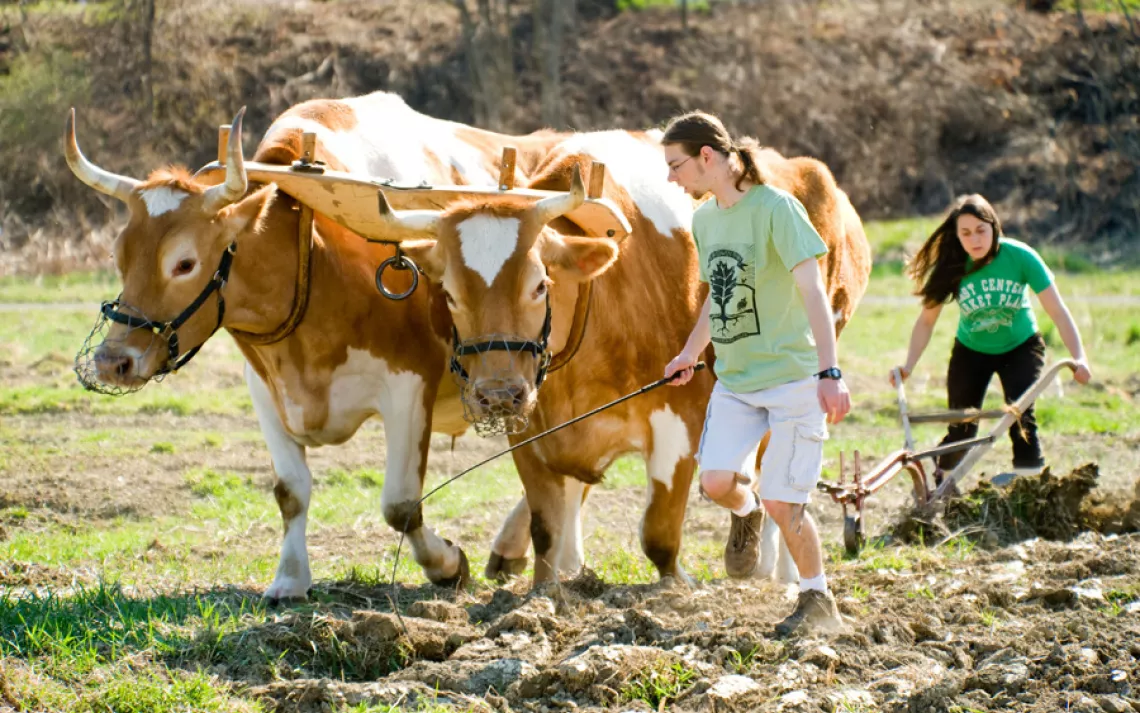
2: Green Mountain College
Poultney, Vermont
Cattle helped Green Mountain, in Poultney, Vermont, achieve climate neutrality. The school gets upward of half its energy from Central Vermont Cow Power, a utility that harnesses biogas from manure. Above, students learn to drive GMC's oxen for spring plowing. The school's agricultural projects are an experiment in fossil-free farming—instead of tractors, draft animals do much of the work.
Photo courtesy of Andy Duback
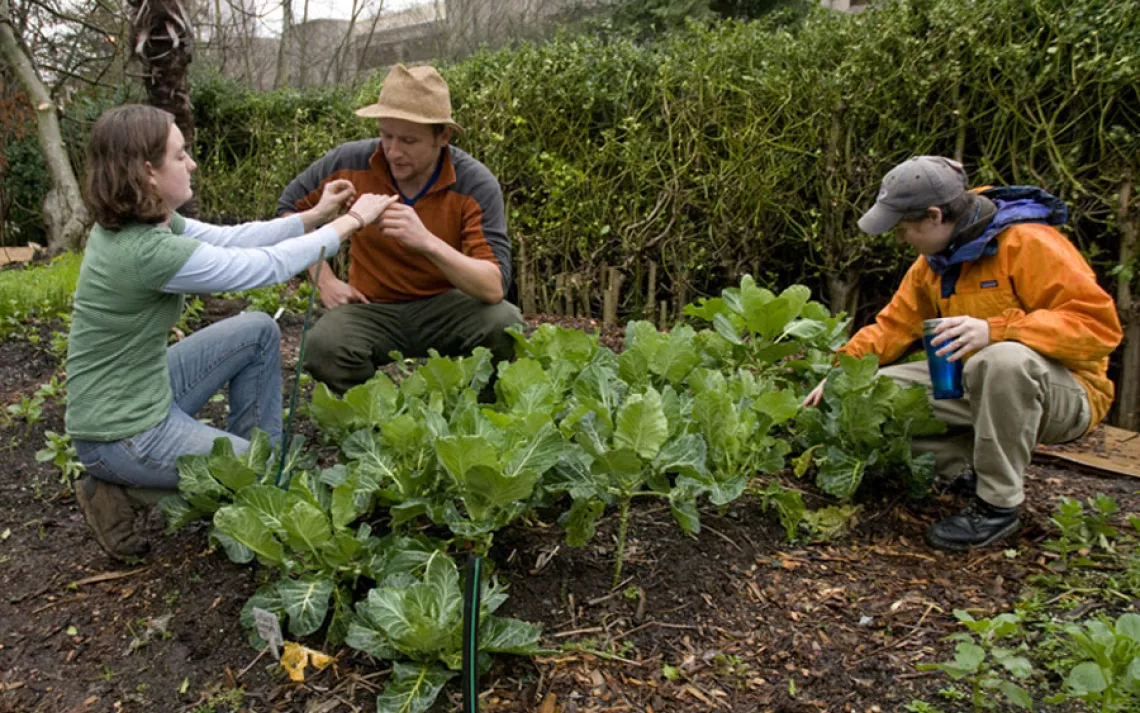
1: University of Washington
Seattle, Washington
Just a few reasons why UW leads the pack: Every building completed since 2009 has earned LEED Gold. All appliances bought are Energy Star rated. And the hydropowered campus runs three farms, an extensive recycling program, and the conservation-research hotbed Pack Forest. Above, from left, students Rachel Malinen, Brady Ryan, and Elizabeth Wheat tend to their cabbage crop.
Photo courtesy of UW/Mary Levin
Avital Andrews is Sierra's former lifestyle editor. Follow her on Twitter @avitalb.
More articles by this author- Keywords:
- cool schools
 The Magazine of The Sierra Club
The Magazine of The Sierra Club


